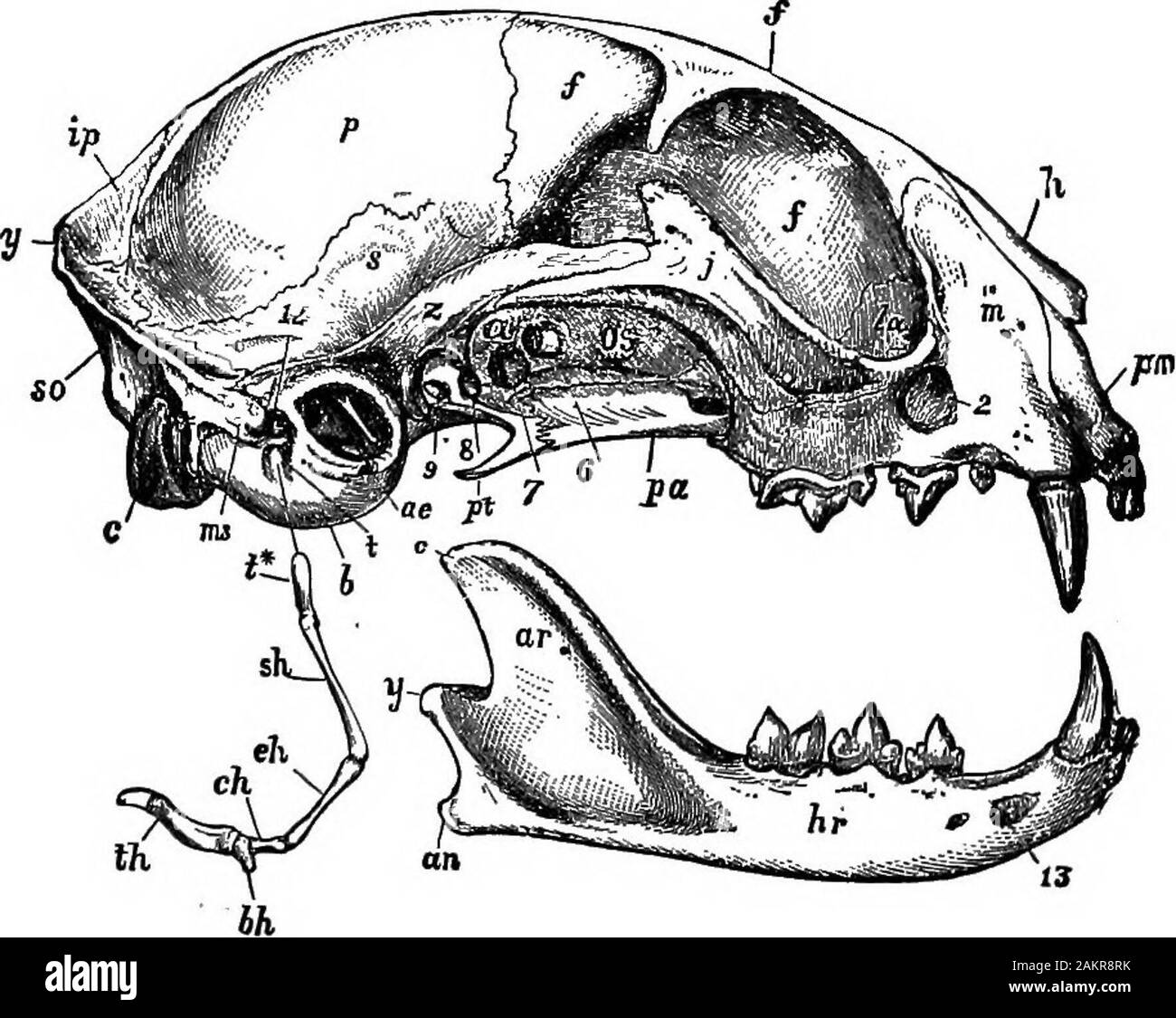First lesson in zoology : adapted for use in schools . Fig. 225.—TJnder-surface of hind-paw, n, HI, rv, V, the respec-tive four digits, a, pad beneaththe metatarsal bones; h, heel. Now observe the limbs (Figs. 224, 225). The front pairis shorter than the hind legs, and each limb consists of an 220 FIB8T LE8S0N8 IN ZOOLOGY. upper arm, a fore arm, and a paw, with five short toes. Thehind limbs each consist of a thigh, a leg, and a foot withbut four toes. The elbow and knee are close to the trunk.It is so with the dog. The legs of the ox and horse do notproject from the body above the knee or elb

Image details
Contributor:
The Reading Room / Alamy Stock PhotoImage ID:
2AKR8RKFile size:
7.1 MB (382.1 KB Compressed download)Releases:
Model - no | Property - noDo I need a release?Dimensions:
1771 x 1411 px | 30 x 23.9 cm | 11.8 x 9.4 inches | 150dpiMore information:
This image is a public domain image, which means either that copyright has expired in the image or the copyright holder has waived their copyright. Alamy charges you a fee for access to the high resolution copy of the image.
This image could have imperfections as it’s either historical or reportage.
First lesson in zoology : adapted for use in schools . Fig. 225.—TJnder-surface of hind-paw, n, HI, rv, V, the respec-tive four digits, a, pad beneaththe metatarsal bones; h, heel. Now observe the limbs (Figs. 224, 225). The front pairis shorter than the hind legs, and each limb consists of an 220 FIB8T LE8S0N8 IN ZOOLOGY. upper arm, a fore arm, and a paw, with five short toes. Thehind limbs each consist of a thigh, a leg, and a foot withbut four toes. The elbow and knee are close to the trunk.It is so with the dog. The legs of the ox and horse do notproject from the body above the knee or elbow; those of themonkeys project two thirds of their length, while the limbsof man are wholly free from the trunk.. Fio. 226.—Side-view of the cats skull, the lower jaw and hyoid bone (tft, f*]j beingdetached, a, aJlsphenold bone; a<^^ external auditory canal; a?*, ascending ra-mus; 6, auditory bulla; c, occipital condyle; /, frontal; tj), interparietal; j, malar or jugal; kt, lachrymal; in^ maxilla; ins^ mastoid _process; 7i, nasal; o&^orbito-sphenoid; p, parietal; pa, palatine; pt, pterygoid; pm, premaxilla; s, squamosal; so, supraoccipital; z^ zygoma; 2, infraorbital foramen; 6, opticforamen. Opening the mouth, we see that it is lined with a soft, delicate wet skin called mucous membrane, while the jawscontain teeth. A full-grown cat has thirty teeth, or fifteenon each side of the head, but two more in the upper thanin the lower jaw. We haye seen that in reptiles the teeth are conical andmuch alike, but in the eat and other mammals there is agreat difference h^^ *s, teeth of different parts of the jaw. THE CAT AS A TYPE OF THE MAMMALS. 221 Looking at the teeth in one side of a jaw (Fig.